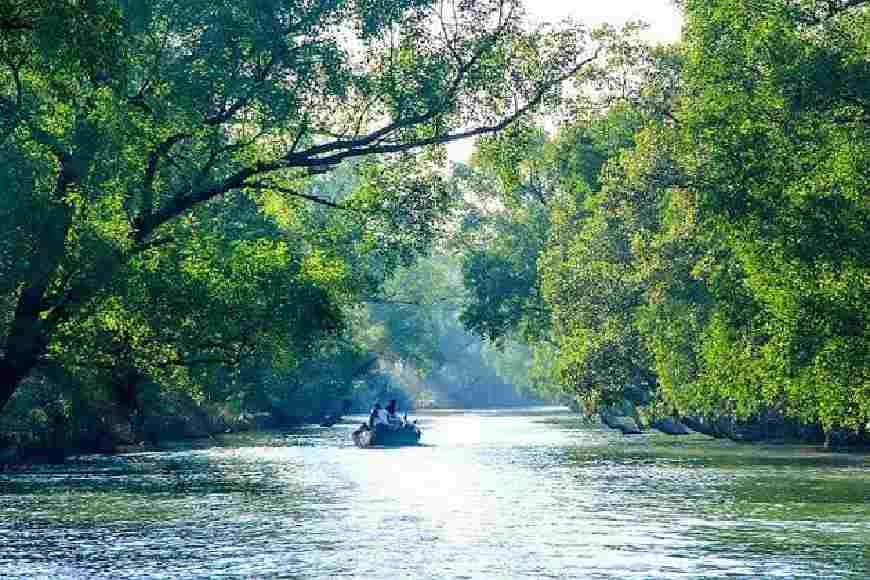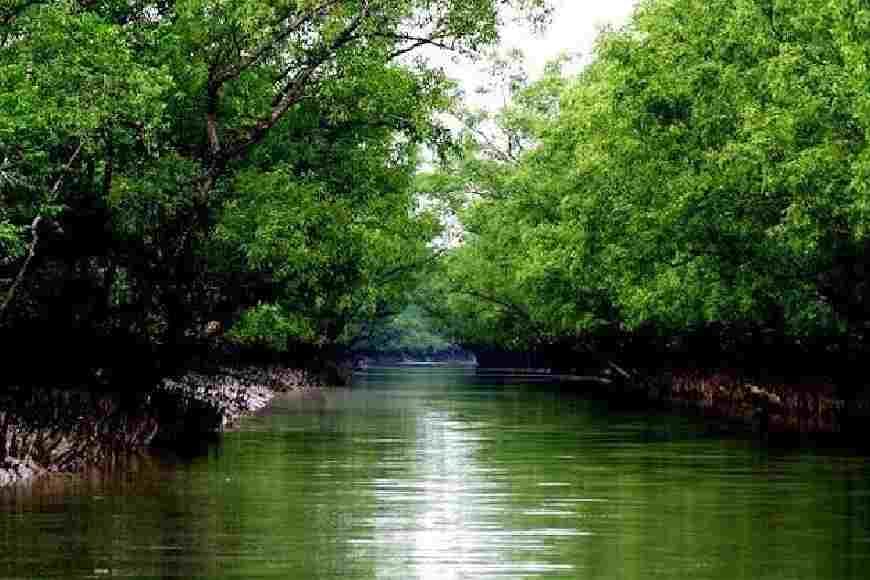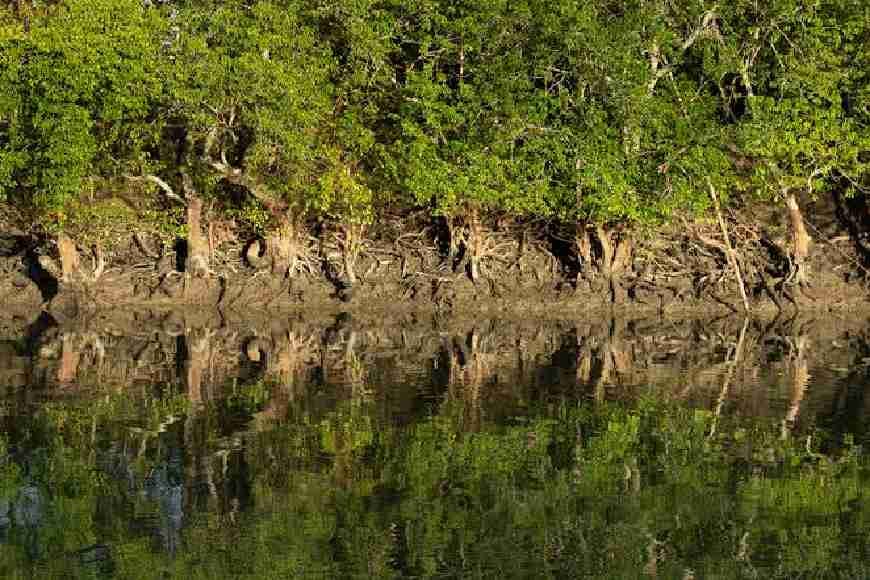‘MISHTI’ to save Sundarbans through planting and protecting Mangrove

If the devastation of the recent earthquake of Turkey is sending ripples of shockwaves through the nation, so did the cyclones of Aila and Amphaan that had ripped through the heart and soul of Sundarbans, the largest mangrove forest of the world harbouring some of the most endangered flora and fauna. What these devastating cyclones taught us was not just the ill effects of climate change and how they can wreak havoc with property and human lives, they also threw up the challenge of a future path that would help conserve the environment in a better way and protect Sundarbans from further devastation.
Keeping this in mind the Union Budget 2023-24 announced that mangrove plantations will be taken up along the country’s coastline apart from salt pans, wherever feasible, through the convergence of the job guarantee scheme MGNREGS, the Compensatory Afforestation Fund, and other funding sources. Building on India’s success in afforestation, ‘Mangrove Initiative for Shoreline Habitats and Tangible Incomes’, MISHTI, will be taken up for mangrove plantation along the coastline and on salt pan lands. MISHTI comes at a time when mangrove resources are under the threat of commercialisation for aquaculture, coastal development, and industrial activities. Promoting mangrove plantations will help in ecological stabilisation, provide protection against cyclones, support biodiversity, and create blue carbon sinks. The coastal ecosystem acts as a natural barrier in case of Sundarbans.

As Umashankar Mandal, the Mangrove Man of Sundarbans who is also a Geography teacher feels: “MISHTI, which focuses on mangroves, will help prevent further soil erosion and help stabilise coastline ecosystems. Mangroves are natural barriers that protect nearby populated areas by absorbing the impacts of storm surges during extreme weather events and by preventing erosion. Their dense roots bind the soil, their stilt roots growing above the ground help slow down water flow and result in sediment deposits. This stops coastal erosion to a large extent.” Many local activists of Sundarbans like Umashankar have joined hands since 2016-2017 trying to bring in a ‘Mangrove Plantation Revolution’ across the coasts. As Prasenjit Mandal of Sundarban Foundations says: “Sundarbans has been repeatedly battered over a decade by devastating cyclones. Particularly the destruction by Amphaan was unprecedented in recent public memory, damaging low-lying areas that were inundated and crops over thousands of acres were destroyed. Then came Cyclone Yaas. It coincided with the perigean spring tide and the resulting storm surge battered the three coastal districts in Bengal and the Sundarbans. What partly saved the area was however the Mangroves.”
The West Bengal Government, under the guidance of the Hon’ble CM Mamata Banerjee, formed a committee of scientists and environmentalists after Cyclone Amphaan who submitted a report that corroborated the locals’ experience and confirmed that effect of cyclones could have been worse if the mangrove forests had not formed the first line of defense. The delta’s mangrove forests have historically protected the state from cyclones. But deforestation and climate change have taken a heavy toll. Mangrove forests, nature’s buffer against disasters, have faced the brunt of unregulated coastal development, shrinking of deltas and climate change linked to extreme events. The degrading health of mangroves affects their resilience and recovery potential against climate change consequences like sea-level rise.

Mamata Banerjee directed to earmark almost 4,652 hectares of land for Mangrove plantation. Around 2.5 crore trees, both large and small, were destroyed in Sundarbans, during the floods and cyclones. They needed to be replenished. “Sundarban Foundation involves local women to help in the plantation drive. We make nurseries near the banks after collecting the seeds of trees like Goran, Geon etc and they are planted near saline water. Once they turn into saplings and then into small plants, they are replanted in the designated areas.”
A major problem with the mangrove plantation is how to protect the trees that are coming up? Many a time they are eaten by animals, grazing cattle, destroyed in trampling, leading to their destruction even before they can grow tall. “We employ 2-3 local women after the plantation drive is over per 10-20 bigha, who look after these growing plants, so that most of them can actually grow into adult mangroves,” added Prasenjit Mandal.
In a bid to reduce the impact of cyclones and protect the embankments from the waves that are triggered during cyclones, the South 24-Parganas district administration planted around 7.5 crores mangrove saplings. Areas like Bali Island, Ranipur of Gosaba Block and many other areas were under mangrove plantation drive. The district administration allotted 1,094 hectares of land for the plantation of saplings. The locals were involved and the mangrove plantation drive helped the local work force to earn through a 100-day work project. More than 30 thousand families were involved in the project. One lakh women were roped in this scheme to plant crores of mangroves. The district officials insist this plantation drive on a massive scale will provide an alternative source of income for the villagers who have lost everything in the cyclone or have returned to their villages from other states due to lack of employment.
The mangroves help hold back the strong blows of the high tidal waves. The river embankments are protected as the root of the mangroves grips the earth tight and that resists landslides. Besides, the mangrove is the only plant species which has the maximum capacity to inhale carbon dioxide. The suction capacity is found more in the mangrove leaves compared to the freshwater green leaves. Mangrove trees are the green soldiers who can defend us from disasters in the future. In the Sundarbans, 26 different species of mangroves surround the entire forest and maintain the ecological balance as well as become the high wall in the face of cyclones hitting the Bay of Bengal coast. Many organisations like Rotary Club have also come forward to donate mangrove saplings and seeds. As Umashankar adds: “In 2009 when devastating cyclone Aila hit Sundarbans, waves of six-seven feet high lashed upon the river. One such wave hit a house and lifted it off the ground. I was a witness to this whole catastrophe. I was devastated. That day I had pledged to plant more and more mangroves that will act as a natural protective wall for Sundarbans. After Aila, he started planting mangrove saplings like Bain, Garan etc. in the vicinity of Chargheri. Many mangrove seeds floated in the river. He collected them from the women of the village. Then he buried them on the riverbanks, that germinated into mangrove saplings. Thus, he collected six and a half lakh mangrove saplings in the last 10 years. Next came the planting drive. He along with the women of his village started planting the saplings in a place called Parashamani near the Garal river on Satjelia Island. The women here have long been involved in mangrove plantation. Umashankar encourages everyone to plant mangroves in various ways.
He has planted six and a half lakh mangroves within 12 years since 2009. Mangroves are now much larger, with the ability to take storm drills. With projects like MISHTI, a better boost will be provided to the local communities and encourage them to save Sundarbans. Nowadays villagers, especially women are coming to plant saplings. Some are given saris, some mosquito nets and other clothes, or sanitary pads, in return for their hard work. And they also earn money at times.










